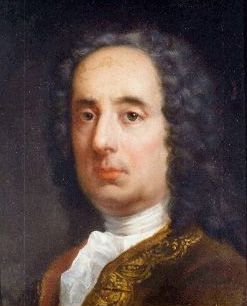Antonio Maria Bononcini on:
[Wikipedia]
[Google]
[Amazon]
 Antonio Maria Bononcini (18 June 1677 – 8 July 1726) was an Italian
Antonio Maria Bononcini (18 June 1677 – 8 July 1726) was an Italian
"Bononcini, Antonio Maria"
in ''The Harvard Biographical Dictionary of Music'', Harvard University Press, 1996, p. 92. 1677 births 1726 deaths Italian Baroque composers Italian male classical composers Italian opera composers Male opera composers Musicians from Modena 18th-century Italian composers 18th-century Italian male musicians {{Italy-composer-stub
 Antonio Maria Bononcini (18 June 1677 – 8 July 1726) was an Italian
Antonio Maria Bononcini (18 June 1677 – 8 July 1726) was an Italian cellist
The cello ( ; plural ''celli'' or ''cellos'') or violoncello ( ; ) is a bowed (sometimes plucked and occasionally hit) string instrument of the violin family. Its four strings are usually tuned in perfect fifths: from low to high, C2, G2, D3 ...
and composer, the younger brother of the better-known Giovanni Bononcini
Giovanni Bononcini (or Buononcini) (18 July 1670 – 9 July 1747) (sometimes cited also as Giovanni Battista Bononcini) was an Italian Baroque composer, cellist, singer and teacher, one of a family of string players and composers.
Biography
E ...
.
Bononcini was born and died at Modena
Modena (, , ; egl, label=Emilian language#Dialects, Modenese, Mòdna ; ett, Mutna; la, Mutina) is a city and ''comune'' (municipality) on the south side of the Po Valley, in the Province of Modena in the Emilia-Romagna region of northern I ...
in Italy
Italy ( it, Italia ), officially the Italian Republic, ) or the Republic of Italy, is a country in Southern Europe. It is located in the middle of the Mediterranean Sea, and its territory largely coincides with the homonymous geographical re ...
. Like his brother, he studied with Giovanni Paolo Colonna
Giovanni Paolo Colonna (16 June 1637 – 28 November 1695) was an Italian composer, teacher, organist and organ builder. In addition to being chapel-master and organist of San Petronio Basilica in Bologna, he served prominent members of the co ...
. Between 1690 and 1693, he played in the orchestra of Cardinal Pamphili. In 1698 he composed an allegory, ''La fama eroica'', for performance in Rome. He worked for some years with his brother, and joined him in the court orchestra at Vienna
en, Viennese
, iso_code = AT-9
, registration_plate = W
, postal_code_type = Postal code
, postal_code =
, timezone = CET
, utc_offset = +1
, timezone_DST ...
, where in 1705 he became ''Kapellmeister'' to the future Holy Roman Emperor
The Holy Roman Emperor, originally and officially the Emperor of the Romans ( la, Imperator Romanorum, german: Kaiser der Römer) during the Middle Ages, and also known as the Roman-German Emperor since the early modern period ( la, Imperat ...
Charles VI. In 1713 he returned to Italy, where he worked in Milan, Naples and Modena. In 1721 he became the ''maestro di cappella'' in Modena, where he remained for the rest of his life. In addition to his stage works, he composed over 40 cantatas
A cantata (; ; literally "sung", past participle feminine singular of the Italian verb ''cantare'', "to sing") is a vocal composition with an instrumental accompaniment, typically in several movements, often involving a choir.
The meaning of t ...
(most of them for solo voice and harpsichord
A harpsichord ( it, clavicembalo; french: clavecin; german: Cembalo; es, clavecín; pt, cravo; nl, klavecimbel; pl, klawesyn) is a musical instrument played by means of a keyboard. This activates a row of levers that turn a trigger mechanism ...
), as well as sacred music
Religious music (also sacred music) is a type of music that is performed or composed for religious use or through religious influence. It may overlap with ritual music, which is music, sacred or not, performed or composed for or as ritual. Relig ...
including a ''Mass
Mass is an intrinsic property of a body. It was traditionally believed to be related to the quantity of matter in a physical body, until the discovery of the atom and particle physics. It was found that different atoms and different elementar ...
in G minor'', a '' Stabat Mater in C Minor'', and a ''Salve Regina
The "Salve Regina" (, ; meaning 'Hail Queen'), also known as the "Hail Holy Queen", is a Marian hymn and one of four Marian antiphons sung at different seasons within the Christian liturgical calendar of the Catholic Church. The Salve Regina ...
''.
Operas
*''Tigrane, re d'Armenia'' (1710) *''I veri amici'' (1715) *''Il tiranno eroe'' (1715) *''Sesostri re d'Egitto'' (1716) *''La conquista del vello d'oro'' (1717) *''Astianatte'' (1718) *'' Griselda'' (1718) *''Nino'' (1720) *''Merope'' (1721) *''Endimione'' (1721) *''Rosiclea in Dania'' (1721)References
*Randel, Don Michael (ed."Bononcini, Antonio Maria"
in ''The Harvard Biographical Dictionary of Music'', Harvard University Press, 1996, p. 92. 1677 births 1726 deaths Italian Baroque composers Italian male classical composers Italian opera composers Male opera composers Musicians from Modena 18th-century Italian composers 18th-century Italian male musicians {{Italy-composer-stub